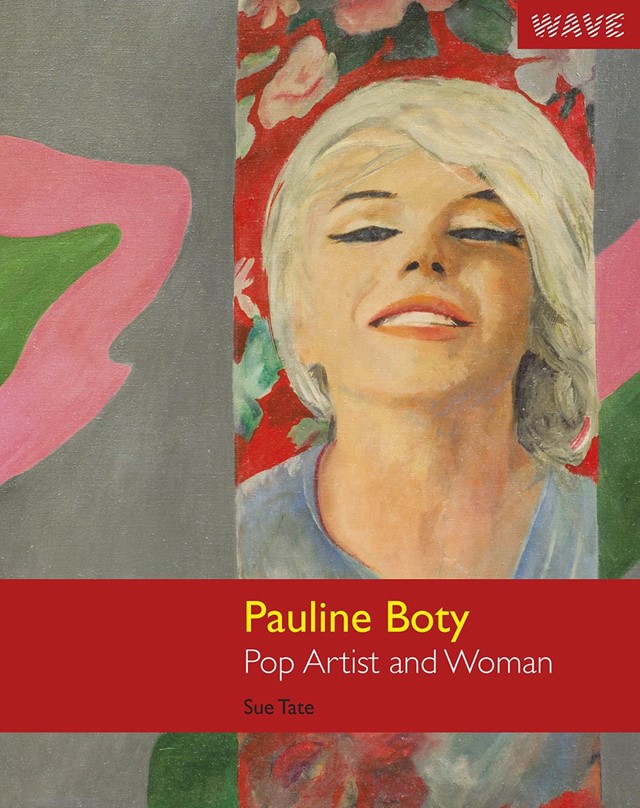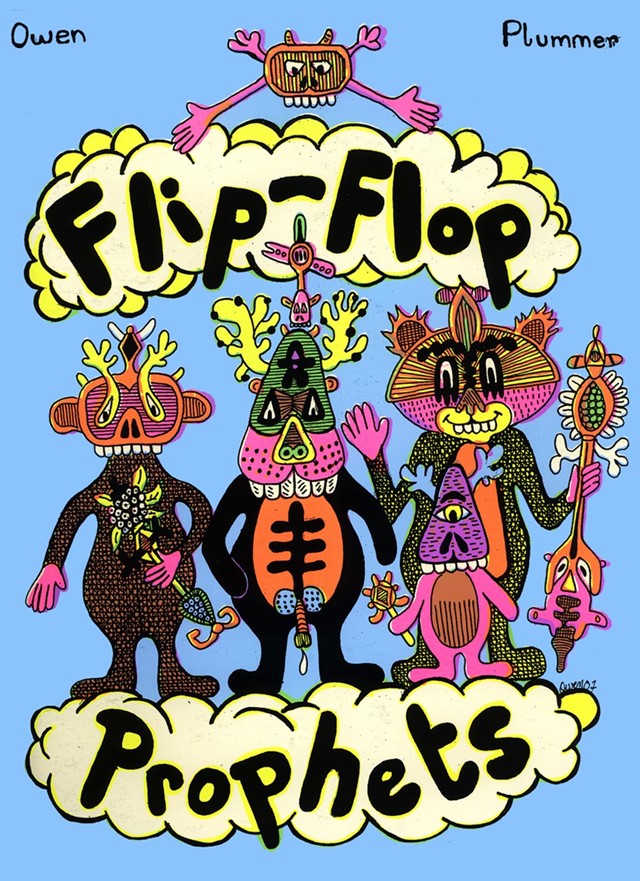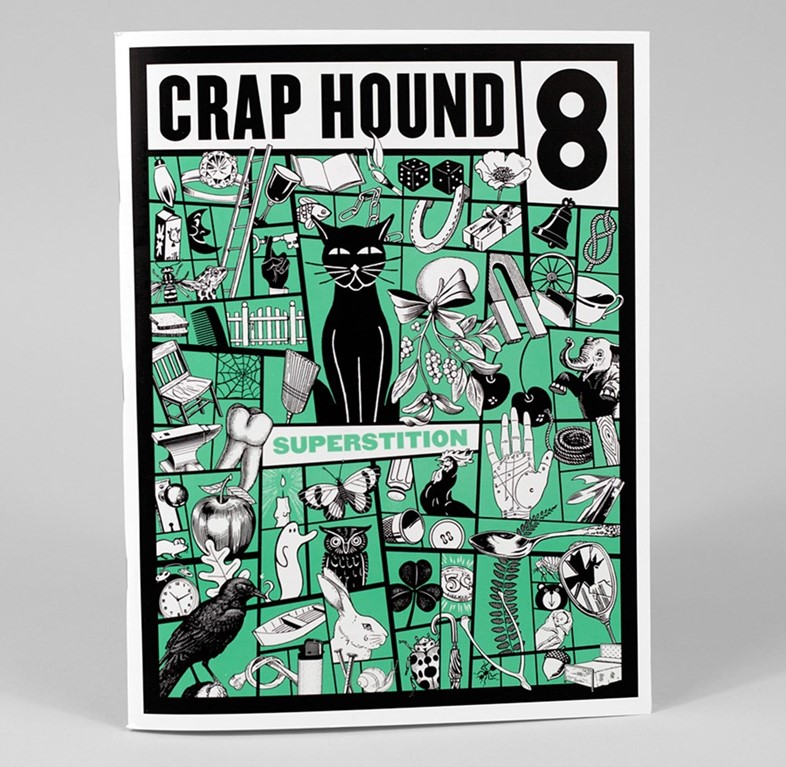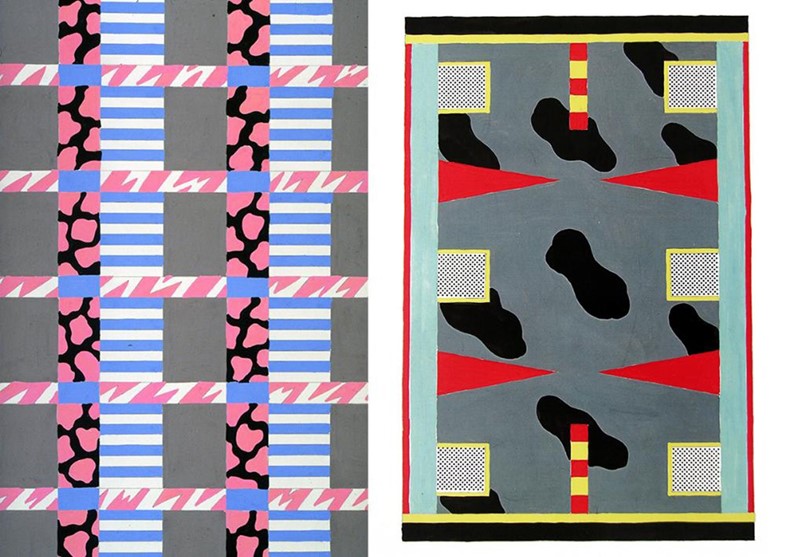The artist and illustrator launches a vibrant new book this week, and to celebrate, we had a chat with her about her own most influential reads
Glassy-eyed hearts, monochromatic spirals and flowers in psychedelic shades have become the visual motifs of Hattie Stewart, the London-based artist and illustrator whose dynamic characters can be found trailing in her wake on surfaces including albums, walls and magazine covers. This week she introduces her newest printed work, Living With Hattie Stewart. Printed by Roads, it consists of 32 removable art pieces with perforated edges that beg to be framed and hung on walls, each bearing a question and answer from the artist on its reverse. It’s a tour de force of Stewart’s signature marks – a unique blend of playful cartoons with a more sinister undertone – and a roadmap of her greatest influences, she explains. “When I was younger I used to love reading Beano, and Dandy, and the Beryl the Peril comic strips. I’d always copy them, so I think that comic book styling was always there early on, and that’s the mischievous, tongue-in-cheek, sinister air that has sort of carried through on to my work today.”
The Beano favourites don’t feature in her top five most influential tomes, but pop artist Pauline Boty, Memphis pioneer Nathalie Du Pasquier and Britain’s first female special agent Christine Granville all do, making the graphic artist’s list a who’s who of brilliant women. Read on for more.

Pauline Boty, Pop Artist and Woman
“I found a bookshop around the corner from the Tate once that sold old exhibition catalogues, and that's where I came across my first book by Pauline Boty, called The Only Blonde In The World. I fell in love with her immediately. I started to read more into her history, and that was when I got this book on her.
Boty was a 60s pop artist and one of the original founders of the British pop art movement. She died really young, in her late 20s, and it seemed like her work disappeared when she passed away. She was one of those young artists who was gorgeous as well as talented, and she really owned her own sexuality in a male-dominated area. When discovered more about her I was like, how do I not know of this woman? How many other female artists who had such a profound effect have been totally overlooked?”

Owen Plummer, Flip Flop Prophets
“Flip Flop Prophets is an A4 screenprinted book by Owen Plummer. He has this really cool cartoonish style and he was a big inspiration to me: the fluorescent colours, crazy characters. It’s such a treasure of mine. This one doesn't really have a narrative – it’s more about the characters and how they interact with each other – but it is just like an art book; it's all visual, and there's not really any sort of story behind it. I don't know of the artist's intention really, I just look at it as a visual treat. It's freakin' nuts.”

Craphound, Issue #8
“Craphound is an absolute treasure trove. It literally does exactly as it says – it’s just a book full of crap, based around this specific theme of each issue. This one, Superstition, has lots of black cats, horseshoes, magnets: it's jam-packed full of all these insane visual references. Nothing's helped me more than this series of books when I need to figure out how to draw something, or visualise something. You know when you see one visual reference and it just sort of sparks off so many creative ideas? That's what Craphound book does to me. It's genius. I absolutely love it.”

Don't Take These Drawings Too Seriously, Nathalie Du Pasquier
“Nathalie Du Pasquier is incredible. Don't Take These Drawings Too Seriously is a book which came out last year, published by Powerhouse Books, and it's absolutely stunning. Obviously the Memphis thing has had huge resurgence in the past couple of years, and Du Pasquier is one of the original founders of the Memphis group, so it’s amazing to see all her work in one place: she has a style that you see referenced in so many places without necessarily knowing that she's the artist behind it all. I was only introduced to her properly a year or two ago, and I love that there are still so many artists that I'm discovering. This is a beautifully put-together book from a huge inspiration.”

The Spy Who Loved, Clare Mulley
"I have a special interest in World War Two history, especially the role women played during those times. I was having a nosey in the World War Two section at my local bookshop and came across this book by chance, and it has since become one of my favourite stories of all time. The book is a fascinating account of the life of Christine Granville, who was Britain's first female special agent – her story is as remarkable as it is infuriating. I can only dream of having half the courage she had in her lifetime."
